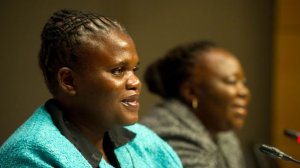The Department of Communications (DoC) is preparing to align the soon-to-be-gazetted final Broadcasting Digital Migration (BDM) policy to the activities required to kick-start South Africa’s transition from analogue to digital broadcasting.
Following Cabinet’s approval of the amendments to the policy last week, the department, which aimed to gazette the BDM policy next week, said on Friday that it was already engaging the relevant entities to migrate the nation to digital terrestrial television (DTT).
The country was now moving rapidly on the project, DoC acting director-general Donald Liphoko indicated to a Joint Portfolio Committee on Communications and Telecommunications and Postal Services in Parliament this week.
State-owned Sentech, which was responsible for upgrading the broadcast network and duplicating the current analogue network channels on a digital system, was “almost ready” to distribute a digital signal.
Sentech had completed the roll-out of digital infrastructure across all 178 analogue sites in the country, providing 84.01% population coverage and 57.82% geographic coverage, COO Kganki Matabane reported.
The remainder of the population, which were in hard-to-reach regions deemed uneconomical to deploy terrestrial connections, would be serviced through the use of direct-to-home satellite.
It was expected that the network would run the digital and analogue frequencies for an undetermined “dual-illumination” period until the analogue transmission was switched off.
While Communications Minister Faith Muthambi had yet to announce the digital switch-on and analogue switch-off dates, other activities towards a digital television future were gaining traction, including the nearly finalised DTT regulations by the Independent Communications Authority of South Africa and the preparation of State broadcaster South African Broadcasting Corporation to provide universal service coverage and new channels.
The South African Post Office, in partnership with the Government Communication and Information System (GCIS), was expected to implement plans to distribute the 100% government-subsidised decoders required to intercept the digital broadcasting frequencies.
The Universal Service and Access Agency of South Africa was currently finalising the criteria of the more than five-million qualifying poor TV-owning households set to receive a subsidised set-top box (STB).
“The post office has presence in every community of the country and this will help us with the distribution of STBs. We will also be assisted by GCIS, as it already has established provincial distribution centres throughout the country,” Liphoko explained.
Further, the GCIS, relevant State-owned entities and stakeholders were expected to embark on a R90-million countrywide public awareness campaign on digital migration to ensure that South Africans switch to digital.
EMAIL THIS ARTICLE SAVE THIS ARTICLE
To subscribe email subscriptions@creamermedia.co.za or click here
To advertise email advertising@creamermedia.co.za or click here











